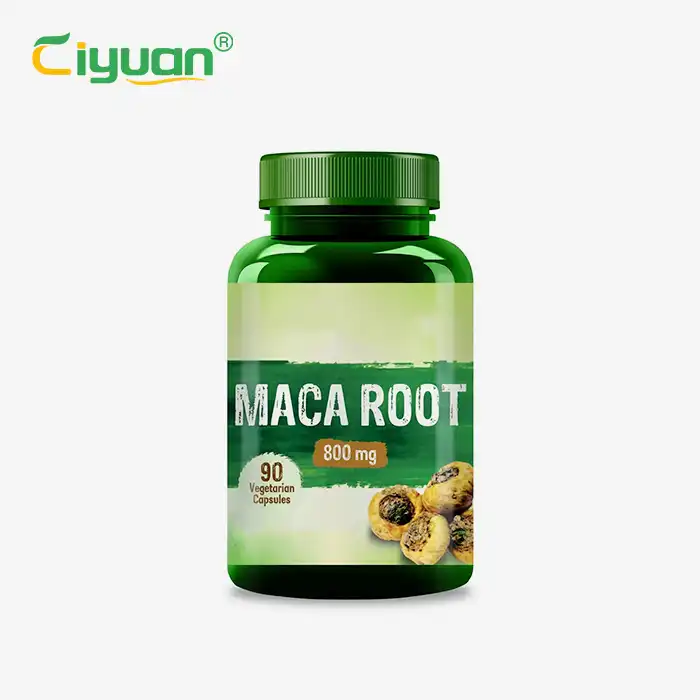What is the difference between green tea extract and green tea?
 2025-11-12 14:22:07
2025-11-12 14:22:07
1. Source: Different Processing, Same Plant.
The green tea and the Best Green Tea Extract Capsules are the products of the Camellia sinensis plant. The key difference is however in the manner of processing.
Green tea is generally produced by drying and steaming fresh tea leaves in a light manner in order to maintain their natural color and anti-oxidant substances. A moderate quantity of active components like catechins, caffeine and amino acids are then extracted by the dried leaves in the process of making tea which is performed under hot water.
Green tea extract on the other hand is the extract of these bioactive compounds attained after the selective extraction of the same. The solvents used to extract catechins, polyphenols, and other favorable compounds include water or alcohol. It is then filtered, purified and dried into a liquid or powder concentrate.
Subsequently, green tea extract provides a greater amount of active compounds than an ordinary cup of brewed green tea.
If you’re intrigued by Ciyuan Bio, Claim your free sample today! Need technical support for formulation or OEM/ODM solutions tailored to your brand? Reach out to us now or contact selina@ciybio.com.cn —we’re ready to collaborate.

Best Green Tea Extract Capsules
Specifications: Customized
MOQ: 100 Bottles
Packing: 100bottles/carton or Customized
Certificate: ISO22000; HALAL; KOSHER; FDA
Shipping: Express;Sea; Air
Payment:TT;LC;West Union;Paypal;Alipay
Samples:1 bottle free sample for test
Shelf life: 24 Months in The Cool Dry Place
All of our products can be customized with raw materials and finished products such as capsules, tablets, pills, and small packaging according to your requirements! Ciyuan can also do free design,OEM packing, and private label. Our plant extract are crafted with your unique needs and are packed with the power of plants.
Reach out to us and Claim your free sample today!
2. Composition and Standardization.
The level of concentration is one of the major distinctions between a green tea and a green tea extract.
Different types of tea have varying concentrations of catechins, caffeine, and antioxidants depending on the length of the brewing time and quality of tea. Green tea extract, conversely, is very concentrated and in many cases standardized to include a certain percentage of catechins or EGCG (epigallocatechin gallate) so that all batches have the same strength.
An example is that an average green tea extract supplement may have 40-60 per cent catechins and 15-30 per cent EGCG, but brewed tea has a more diluted mixture. This standardization makes green tea extract to be very appropriate in the application in nutraceuticals, cosmetics and functional food sectors where accuracy and predictability are required.
3. Form and Usage
Green tea is in the form of a drink mostly. The world loves it due to its flavor, smell, and culture. The use of traditional procedures in brewing gives the consumers the opportunity to enjoy the freshness and ritual of drinking tea.
The Best Green Tea Extract Capsules are however available in many types such as capsules, tablets, powder and liquid concentrates. It is usually a component of:
Food supplements meant to help you stay active, metabolic, or healthy.
Energy drinks and functional drinks that must have a concentrated supply of natural substances.
On its antioxidant and soothing effects, cosmetic products, such as creams and serums.
Food fortification, in which food producers incorporate green tea extract in snacks, nutrition bars, or baked goods, as a part of enhanced functionality.
This flexibility allows the green tea extract to be more industrial and commercial in its application as compared to the ordinary green tea.
4. Potency and Dosage Control
The other key difference is the power and flexibility of dosage of green tea extract.
Extract forms are concentrated and hence the manufacturer can easily regulate the quantity of the active compounds in a given product. It is possible to do this in supplements and make sure that every dose gives a uniform amount of catechins or EGCG.
In comparison, brewed green tea differs widely in terms of the potency depending on the brewing temperature, the time of steeping the tea and the quality of tea leaves. This range of variation renders green tea less predictable in cases where consistency is needed in the development of a product or even in scientific research.
5. Taste and Sensory Experience.
The sense experience of the two forms is also very different.
Green tea provides the perfect flavor of freshness, slight bitterness and subtle sweetness depending on the region of growth and the processing procedure. It is valued as a drink and as a cultural and social ceremony.
However, the extract of green tea is much more bitter and strong because of the high concentration of catechins. This is why it is normally encapsulated, dissolved in drinks, or covered by flavors in food compositions. Although it does not offer the traditional pleasure of brewed tea, it offers the convenience and efficiency of getting the utility of the green tea compounds in the products of the contemporary functional use.
6. Shelf Stability and Convenience of Manufacturing.
The green tea leaves are sensitive to humidity, temperature, and light. Loss of active compounds and loss of flavor may result when food is improperly stored.
Green tea extract is more stable and has a better shelf life in comparison when it is stored correctly. The extract, particularly in powdered form is more convenient to transport, store and combine with other ingredients. This has seen it become a favorite of international manufacturers who need to have consistent raw materials in order to conduct mass production.
The green tea extract stability also contributes to its flexibility in product types as it is applicable in a great range of products starting with nutraceutical capsules and moving to skincare formulations.
7. Consumer Trends and Applications in the market.
The green tea as well as the green tea extract have a different but complementary role in the current wellness market.
Consumers who want to adopt a healthy lifestyle and have natural and low-calorie drinks are embracing green tea. Its cultural and traditional background in such countries as Japan, China, and Korea also makes it more appealing as a traditional and authentic drink.
Green tea extract on the other hand is being more commonly used in:
Health and wellness nutrition supplements to active consumers and wellness consumers.
Cosmetics and personal care products, in which it promotes anti aging formulas and skin protection.
Functional beverages and food, combining the latest innovation with an increase in the use of traditional plant-based foods.
The concentrated nature of the extract and the ability to change the formulation process enables the extract to satisfy the current market trend in terms of efficacy, transparency and sustainability.
8. Cost and Accessibility
The prices of green tea and green tea extract are varied based on the size of the production, the mode of processing as well as purity.
Green tea that has been brewed is usually cheap and is generally available thus is affordable and can be consumed day in day out.
However, the extraction technology and quality control processes of green tea extract are higher which makes it relatively expensive. With that said, it is highly concentrated, which implies that it requires smaller amounts per product batch, which tends to cover the startup cost of manufacturers.
This effectiveness and flexibility makes it suitable and applicable in various sectors.
9. Conclusion
The main distinction between the green tea and The Best Green Tea Extract Capsules is the concentration, intention and use. Although both are products derived through a plant, Camellia sinensis, green tea is a more traditional product that is known to have cultural and sensory value, whereas green tea extract is a concentrated and standardized ingredient extensively used in the new wellness, food and cosmetic market.
References
Cabrera, C., Artacho, R., & Giménez, R. (2006). Beneficial effects of green tea—A review. Journal of the American College of Nutrition, 25(2), 79–99.
Yang, C. S., & Landau, J. M. (2000). Effects of tea consumption on nutrition and health. Critical Reviews in Food Science and Nutrition, 40(5), 371–398.
McKay, D. L., & Blumberg, J. B. (2002). The role of tea in human health: An update. Journal of the American College of Nutrition, 21(1), 1–13.
Sharangi, A. B. (2009). Medicinal and therapeutic potentialities of tea (Camellia sinensis L.) – A review. Food Research International, 42(5–6), 529–535.
Contact us
If you’re intrigued by Ciyuan Bio, Claim your free sample today! Need technical support for formulation or OEM/ODM solutions tailored to your brand? Reach out to us now or contact selina@ciybio.com.cn —we’re ready to collaborate.











